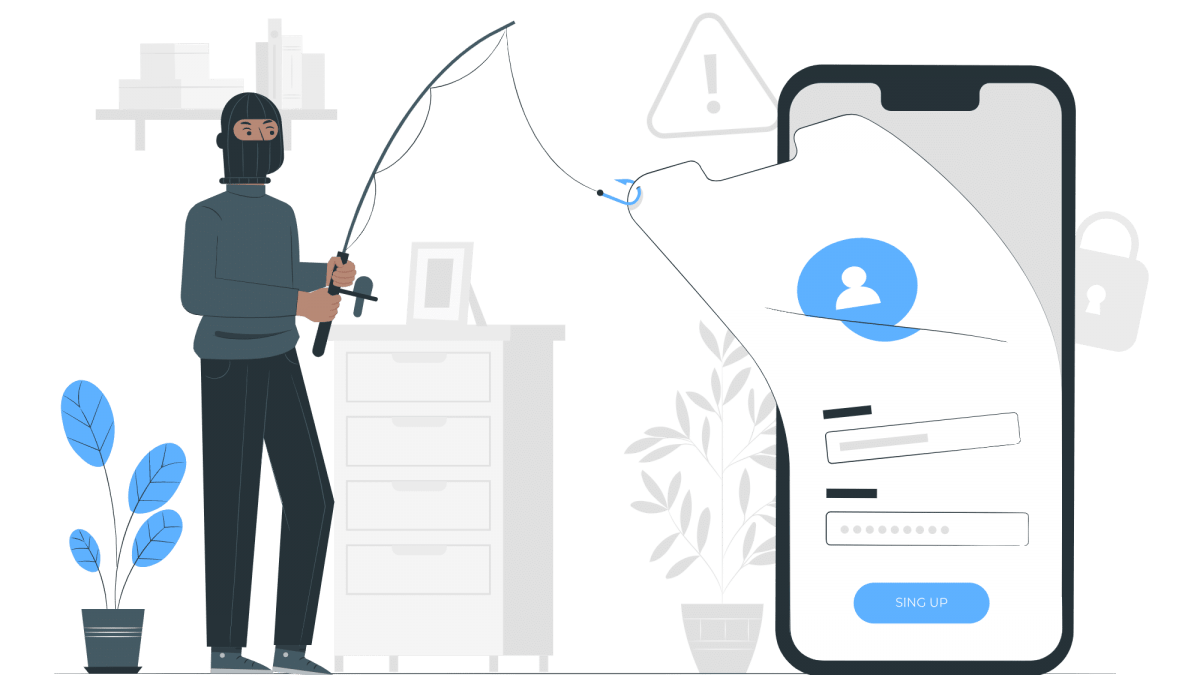How to Recognize A Phishing Email

How to Make Up Secure Passwords That Are Memorable
11 August 2020
Cyber Attacks on Small Businesses in Canada and the USA
16 February 2023Your Phishing is one of the most common methods of cyber crime, but despite how much we think we know about scam emails, people still frequently fall victim.
Action Fraud receives more than 400,000 reports of phishing emails each year, and according to the Mimecast’s State of Email Security 2020, 58% of organisations saw phishing attacks increase in the past 12 months.
Requesting your sensitive information via email
Chances are if you receive an unsolicited email from an institution that provides a link or attachment and asks you to provide sensitive information, it’s a scam. Most companies will not send you an email asking for passwords, credit card information, credit scores, or tax numbers, nor will they send you a link from which you need to login.
Using generic salutations
Phishing emails typically use generic salutations such as “Dear valued member,” “Dear account holder,” or “Dear customer.” If a company you deal with required information about your account, the email would call you by name and probably direct you to contact them via phone
Using bad grammar or wrong spelling
Possibly the easiest way to recognize a scammy email is bad grammar. An email from a legitimate organization should be well written. Little known fact – there’s actually a purpose behind bad syntax. Hackers generally aren’t stupid. They prey on the uneducated believing them to be less observant and thus, easier targets.
Using weird domain names
Don’t just check the name of the person sending you the email. Check their email address by hovering your mouse over the ‘from’ address. Make sure no alterations (like additional numbers or letters) have been made. Check out the difference between these two email addresses as an example of altered emails: bob@paypal.com bob@paypaal.com Just remember, this isn’t a foolproof method. Sometimes companies make use of unique or varied domains to send emails, and some smaller companies use third party email providers.
Force you to their website
Don’t Sometimes phishing emails are coded entirely as a hyperlink. Therefore, clicking accidentally or deliberately anywhere in the email will open a fake web page, or download spam onto your computer.

Legit company links match legitimate URLs
Just because a link says it’s going to send you to one place, doesn’t mean it’s going to. Double check URLs. If the link in the text isn’t identical to the URL displayed as the cursor hovers over the link, that’s a sure sign you will be taken to a site you don’t want to visit. If a hyperlink’s URL doesn’t seem correct, or doesn’t match the context of the email, don’t trust it. Ensure additional security by hovering your mouse over embedded links (without clicking!) and ensure the link begins with https://.
Legit companies don’t send unsolicited attachments
Don’t Sometimes phishing emails are coded entirely as a hyperlink. Therefore, clicking accidentally or deliberately anywhere in the email will open a fake web page, or download spam onto your computer.




